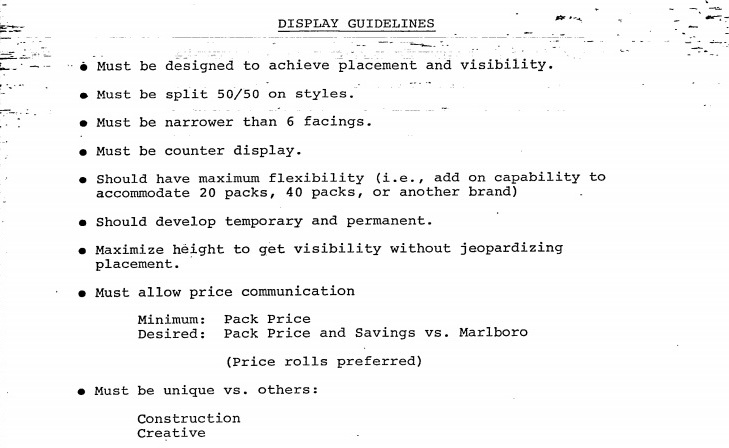Point-of-Sale Timeline
The tobacco industry once used multiple platforms such as TV, billboard, radio, and the point of sale (POS) to advertise its harmful products. In 1998, passage of the Master Settlement Agreement severely restricted the tobacco industry’s advertising activities. However, the agreement’s stipulations did not include regulations for POS marketing. According to the Federal Trade Commission, tobacco and e-cigarette companies paid over $7.3 billion to promote their deadly and addictive products at the POS in 2020 — over 80% of the nearly $1 million they spent per hour on marketing in the United States total.
Although the retail environment has become an increasingly important channel for the tobacco industry, leveraging this avenue is not a new trick in their marketing toolkit. Industry documents reveal that for decades, tobacco companies have valued and recognized the importance of connecting with consumers at the POS. Below we take a look at how marketing at the POS has changed over the years, how it came to be the tobacco industry’s lead marketing channel, and the actions taken at the local, state, and federal level to curtail the tobacco industry’s influence in the retail environment.
Click on an era or year below to browse the timeline.
1930s – 1940s – 1950s – 1960s – 1970s – 1980s – 1990s –2000s – 2005 – 2006 – 2007 – 2008 – 2009 – 2010 – 2011 – 2012 – 2013 – 2014 – 2015 – 2016 – 2017 – 2018 – 2019 – 2020 – 2021 – 2022
1930s
This re-colorized image from 1939 depicts advertising for Chesterfield, Camel, and Old Gold cigarettes, as well as Carhart’s Sweet Scotch Snuff outside the Country Store gas station in Gordonton, North Carolina. Today, convenience stores and gas stations are one of the primary places tobacco is sold, and these store often have more tobacco advertising than other types of stores.
1940s
- In the 1940s, smoking was normative among both men and women. Cigarettes were often even included in military rations. However, in 1947, a paper linking smoking to lung cancer was published in Archives of Surgery by Alton Ochsner and Michael DeBakey. Around the same time, tobacco companies created ad campaigns featuring physicians attempting to assuage any health concerns about their products. For example, RJ Reynolds launched a campaign with the slogan “More doctors smoke Camels than any other cigarette.”
1950s
- The 1950s brought mounting evidence of the health effects of smoking. In 1957, the first U.S. Surgeon General Leroy E. Burney issued a report that said “It is clear that there is an increasing and consistent body of evidence that excessive cigarette smoking is one of the causative factors in lung cancer.”
- The Federal Trade Commission first declared that cigarette ads that highlight health benefits are false and deceptive, and in 1955 issued a set of voluntary advertising guidelines that prohibit unsubstantiated health claims.
- However, tobacco companies continued to come up with new ways to lure in customers, including the debut of the Marlboro Man in 1954. These Falulah Paper Company ads below highlight the trend for national brands, like Chesterfield cigarettes, to use POS displays as a way to increase marketing reach. The featured Chesterfield POS advertisement (left) reads, “For Christmas Gifts- Here’s the Answer! Chesterfield ‘Christmas Card’ Cartons.” On the right is the color version of the actual Chesterfield advertisement.
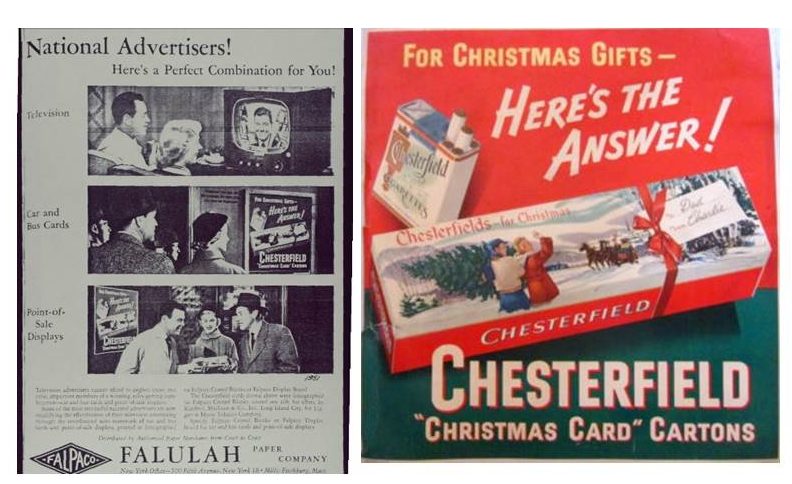
1960s
This image, dating from the early to mid 1960s, captures an in-store holiday display containing cigar and cigarette gift boxes for Dad.
In the 1960s, per capita cigarette consumption in the U.S. reached its peak. However, this decade also brought serious attention to the health consequences of of smoking.
- 1964 – The landmark Surgeon General’s Report “Smoking and Health” linked smoking to death and disease.
- 1965 – Congress passed the Federal Cigarette Labeling and Advertising Act (FCLAA), which required the Surgeon General’s warning on cigarette packs and advertising. It also required the Federal Trade Commission to report to Congress every year on the effectiveness of cigarette labeling, current cigarette advertising and promotion practices, and to make recommendations for legislation.
- 1967 – The federal government began testing cigarettes for tar and nicotine and companies began competing for a “healthier” cigarette. By 2000, “light” or “ultra-light” cigarettes dominated 82% of the market.
- 1968 – Philip Morris introduced Virginia Slims cigarettes, targeting women with the slogan, “You’ve come a long way, baby.”
- 1969 – The Public Health Cigarette Smoking Act was passed, which prohibited cigarette advertising on TV or radio. It also upgraded the Surgeon General’s warning from “Caution: Cigarette Smoking May Be Hazardous to Your Health,” to “Warning: The Surgeon General Has Determined that Cigarette Smoking Is Dangerous to Your Health.”
1970s
In the 1970s, the “menthol war” era began, lasting through the 1990s. Rival companies noticed the popularity of menthol cigarettes like “Kools” in the African-American market niche, and began vying for brand loyalty and profit. This took many forms, including free samples handed out of mobile vans playing music in predominantly African-American inner-city neighborhoods, as well as deep discounts on menthol cigarettes in these same communities, event sponsorships, and building relationships with African-American organizations and institutions. Meanwhile, the annual Great American Smokeout event was launched, helping change public attitudes about smoking and raising awareness about the death and disease caused by smoking.
- 1971 – The Surgeon General proposed a federal ban of smoking in public places, ushering in the beginning of local and state restrictions.
- 1972 – The 6th Surgeon General’s report “The Health Consequences of Smoking” addressed the dangers of secondhand smoke and of smoking during pregnancy.
- 1974 – The state of Connecticut became the first state to implement smoking restrictions in restaurants.
- 1975 – R.J. Reynolds discussed a three-year plan in which the sales strategy was to “dominate at the point-of-purchase.” The excerpts below reveal how the tobacco industry began to pay special attention to the POS by developing internal programs to improve the success of advertising in the retail environment. As outlined in the meeting transcript, R.J. Reynolds set out to overcome issues of poor brand exposure at the POS:

To address this issue, R.J. Reynolds formed a new merchandising team called the Individualized Merchandising Service (IMS) program. The IMS program engaged with retailers to streamline advertising and product distribution at the POS. The program’s goal was to gain the strongest brand exposure possible by ensuring that retailers had the shelving necessary to display products in a neat, organized fashion. An excerpt below highlights how IMS helped Food Fair, a retail outlet, to better showcase their tobacco products to increase brand exposure among consumers.
- 1977 – R.J. Reynolds first attempted to reach low-income female consumers of African-American and Latino neighborhoods by pairing 25 cents off Salem Light coupons with food stamp distribution.
1980s
The 1980s brought attention to women and smoking with the US Surgeon General Report on the Health Consequences of Smoking for Women, and lung cancer surpassed breast cancer to become the leading cause of cancer deaths among women. During this time, R.J. Reynolds brands were also competing for advertising space at the POS. R.J. Reynolds created Project DB, which set out to “offensively capitalize on the price sensitivity of young adult smokers.” The excerpt below from the 1984 R.J. Reynolds promotional sales document outlines plans for the look and layout of the POS display shelving designed to: 1) increase brand visibility among consumers, 2) communicate key marketing messages and 3) differentiate itself from already existing competitor displays.
- 1984
- The FDA approved “Nicorette” – the first nicotine replacement therapy (NRT) as a cessation aid.
- Philip Morris released a series of window display ads with suction cups on them so that they could be placed behind bulletproof windows and still be seen by consumers
- 1986 – Americans for Nonsmokers’ Rights was founded to help increase education & legislations to limit secondhand smoke exposure.
- 1988
- Smoking was outlawed on all domestic commercial flights with IL Senator Durbin’s amendment to the Federal Aviation Act.
- The 20th Surgeon General’s Report, “The Health Consequences of Smoking: Nicotine Addiction” was published, detailing the effects of nicotine on the body from over 2,000 studies and declaring it addictive.
1990s
- 1990 – Courtroom records detail the testimony given by James McMahon, a former R.J. Reynolds division manager, regarding the R.J. Reynolds tobacco marketing initiative titled, “Young Adult Smoker (YAS).” This program was designed to target younger consumers. McMahon discusses his interpretation of a 1989 memo sent from headquarters that outlined regional next steps for the YAS program. McMahon’s testimonial indicates that a core component of the YAS marketing strategy was to target high school and college-aged youth via POS promotions and advertisements in local retail outlets. Additional court testimony reveals that R.J. Reynolds vehemently denied targeting underage smokers. The following 1990 memo released by another R.J. Reynolds division manager in Oklahoma requested that all sales representatives submit reports that list retail outlets with high volume traffic in areas where colleges and high schools are located.

- 1992 – The Synar Amendment to the Alcohol, Drug Abuse, and Mental Health Administration Reorganization Act was passed, introduced by Oklahoma Rep.Mike Synar, requiring states to enact and enforce laws prohibiting the sale or distribution of tobacco products to individuals under the age of 18. The Substance Abuse and Mental Health Services Administration (SAMSHA) was charged with implementing the Synar Amendment, which requires that each state conduct annual, unannounced inspections and maintain a violation rate of no more than 20%.
- 1994
- Tobacco executives from seven American tobacco companies testified before Congress that they “believe nicotine is not addictive,” even though industry documents reveal that they knew the truth.
- The Surgeon General’s Report, “Youth and Tobacco, Preventing Tobacco Use Among Young People,” noted that young people are exposed to cigarette messages through POS displays
- 1995
- R.J. Reynolds launched “Project SCUM” targeting the LGBTQ & homeless communities in San Francisco. SCUM stood for “subculture urban marketing.”
- The Preventing Tobacco Addiction Foundation was founded to reduce the terrible toll of smoking and tobacco use through a preventive effort.
- 1996 – The Campaign for Tobacco-Free Kids was founded to reduce tobacco use through strategic communications and policy advocacy campaigns.
- 1998
- “Tobacco Use Among U.S. Racial/Ethnic Minority Groups: A Report of the Surgeon General” was published.
- Master Settlement Agreement – Following a lawsuit to recover Medicaid and other costs to states related to treating illnesses caused by smoking, Attorneys General in 46 states signed an agreement with the four largest tobacco companies (Philip Morris USA, R.J. Reynolds, Brown & Williamson, and Lorillard). Under the agreement, the companies must make annual payments to the states as compensation. This agreement also places restrictions on advertising, marketing, and promotion of cigarettes — for example, prohibiting youth-targeted ads, including the use of cartoons such as Joe Camel, and prohibiting billboard advertisements. It also created the American Legacy Foundation (now known as Truth Initiative) as a tobacco prevention foundation focused on research and education.
- 1999 – National Tobacco Control Program was created by the CDC’s Office on Smoking and Health. The program provides funding and technical support to state and territorial health departments.
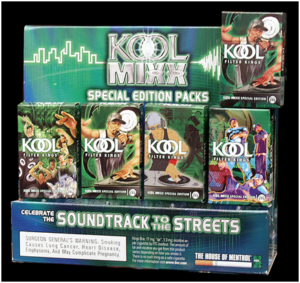
Early 2000s
- 2000 – The federal ban on smoking on airplanes was extended to international flights.
- 2004 – Brown & Williamson’s Kool brand cigarettes released the “Kool Mixx” ad campaign, targeted towards African-American youth through association with hip-hop music and culture and using images of African-Americans. It featured music giveaways with cigarette purchases and a disc jockey competition in major cities around the country. State Attorneys General helped shut it down for youth targeting.
- 2004 – National Quitline funded
2005
- FCTC – The WHO Framework Convention on Tobacco Control became the first global public health treaty, developed in response to the globalization of the tobacco epidemic. It requires Parties to undertake a comprehensive ban of all tobacco advertising, promotion, and sponsorship
- Tobacco 21 – Needham, MA became the first city to raise their minimum legal sales age (MLSA) to 21.The Preventing Tobacco Addiction Foundation is the leading organization on nationwide efforts around Tobacco 21.
2006
- Surgeon General’s Report: – “The Health Consequences of Involuntary Exposure to Tobacco Smoke: A Report of the Surgeon General” concluded there is no risk-free secondhand smoke exposure.
- Tobacco Industry Racketeering Verdict – On August 17, 2006, major tobacco companies were found guilty of racketeering, ruling they deliberately misled the public about the health risks of smoking and secondhand smoke and the addictive design of their products. Judge Kessler ordered them to issue “corrective statements.” See 2017 for more on these.
2007
- Disparities in Point-of-Sale Advertising – Studies began to show a disproportionate amount of tobacco advertising in low-income, marginalized communities. A 2007 meta-analysis found that there were 2.6 times more tobacco advertisements per person in African-American neighborhoods compared to White neighborhoods.
- E-cigarette – E-cigarettes became available in the U.S.
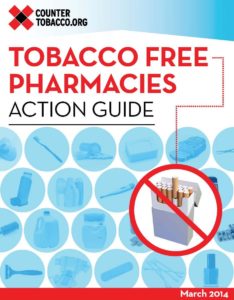
2008
- Tobacco-Free Pharmacies – San Francisco became the first city to prohibit tobacco sales in pharmacies.
2009
- Family Smoking Prevention and Tobacco Control Act – The Family Smoking Prevention and Tobacco Control Act (FSPTCA), also known as the Tobacco Control Act, became law on June 22, 2009. It gave the FDA the authority to regulate the manufacture, distribution, and marketing of tobacco products to protect public health. The Tobacco Control Act gave the FDA immediate authority to regulate cigarettes, cigarette tobacco, roll-your-own tobacco and smokeless tobacco. It also preserved the authority of state, local, and tribal governments to restrict the time, place, and manner of tobacco product promotions and advertisements. It also:
- Banned the sale of flavored cigarettes
- Prohibited the use of terms such as “light,” “low tar” or “mild” on tobacco packages, labeling, or advertising.
- See a visualization of what stores could look like if proposed provisions from the 2009 FSPTCA were put into place.
- Price increases – The federal cigarette excise tax was increased from $0.39 to $1.01 – the largest increase in history, leading to an average combined federal and state excise tax of $2.21 per pack. Raising tobacco excise taxes is one of the most effective strategies for reducing initiation, decreasing consumption, and increasing cessation. Research shows that every 10% increase in the real price of cigarettes reduces adult smoking by about 2%, reduces smoking among young adults by about 3.5%, reduces the number of kids who smoke by 6-7%, and reduces overall cigarette consumption by approximately 3-5%.
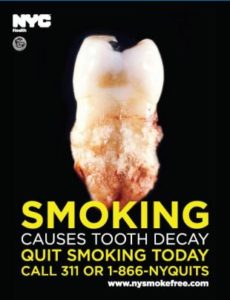
- Graphic Health Warning Labels – New York City became the first city to require graphic health warnings at the POS. A later lawsuit in June 2010 and ruling in December 2010 decided that the required graphic health warnings were preempted by the Federal Labeling and Advertising Act (FCCLA)
- Flavored Tobacco – New York City banned the sales of non-cigarette flavored tobacco products.
2010
- Family Smoking Prevention and Tobacco Control Act – The FDA issued their final rule stemming from the 2009 FSPTCA restricting access & marketing to youth including: requiring a minimum pack size of 20 for cigarettes, and prohibiting both sampling and self-service displays of cigarettes, smokeless tobacco, and roll-your-own tobacco, except in adult-only facilities.
2011
- E-Cigarettes –The FDA indicated its intention to regulate e-cigarettes
- Graphic Health Warning Labels – The FDA released new warning labels for tobacco products & ads, but the tobacco industry filed a complaint, delaying implementation
- CounterTobacco.org – CounterTobacco.org was founded as the first comprehensive resource for local, state, and federal organizations working to counteract tobacco product sales and marketing at the POS.
2012
- Haverstraw, NY Display Ban – Haverstraw, NY enacted a law that would have marked the most progressive local policy on tobacco display bans to date in the United States. Unfortunately, the New York Association of Convenience Stores and seven major tobacco companies filed a lawsuit contesting that this policy violated their First Amendment rights to freedom of speech. In response, Haverstraw withdrew its ban to avoid a court battle that would have been costly for a small town to fight.
- Surgeon General’s Report – “Preventing Tobacco Use in Youth & Young Adults: A Report of the Surgeon General” is released, which concluded that tobacco industry advertisements and promotions cause the onset and continuation of smoking among adolescents and young adults.
- Industry news – Family Dollar began tobacco sales.
- Tips from Former Smokers campaign launched
- Counter Tools – The public health non-profit Counter Tools is founded to provide technology tools, training, and technical assistance to public health practitioners and researchers who are working to enact and enforce policy, systems and environmental interventions in the retail environment.
2013
- Price Discount Ban – Providence, RI became the first city to ban price discounts for tobacco products. They also prohibited the sale of non-cigarette flavored tobacco products. Read a case study about this here.
- New York City – NYC passed a series of bills introducing the most comprehensive POS regulations to date. Their Sensible Tobacco Enforcement legislation prohibits price promotions and the redemption of coupons, sets a minimum “floor” price for cigarettes at $10.50 per pack, requires a minimum pack size and price for little cigars and cigarillos, increases penalties for selling cigarettes without a license or other repeat violations. A display ban was proposed as well, but was later dropped.
- Tobacco 21 – New York City also raised their minimum legal sales age to 21.
- Menthol Buffer Zone in Chicago – The City of Chicago became the first city in the US to restrict the sale of all flavored tobacco products, including menthol, within 500 feet of schools. Read more on this in the case study.
- E-cigarettes – E-cigarettes became a billion-dollar industry as Altria, Lorillard, and R J Reynolds all announced e-cigarette launches.
- Industry news – Dollar General began tobacco sales.
2014
-
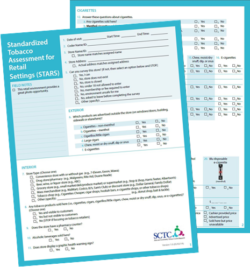
STARS Deeming Rule Proposed – The FDA issued a proposed deeming rule to extend the agency’s authority over all tobacco products.
- STARS – The Standardized Tobacco Assessment for Retail Settings (STARS) surveillance tool was released for practitioners to inform state and local tobacco control policies at the POS.
- Tobacco Industry consolidation – R.J. Reynolds bought Lorillard for $27.4 billion
- Tobacco-Free Pharmacies – CVS voluntarily stopped selling tobacco.
- Retailer Density Reduction – San Francisco’s landmark Tobacco Use Reduction Act was passed. The act sets a cap on the number of tobacco retailers in each supervisory district in order to reduce the total number of retailers by half over time and reduce disparities in density across districts. The act also prohibits new stores from locating within 500 feet of schools or within 500 feet of another existing tobacco retailer.
2015
- Tobacco 21 – Hawaii became the first state to raise the minimum legal sales age to 21.
- Flavored Tobacco Restrictions
- Minneapolis, MN passed a policy restricting the sale of flavored tobacco products to adult-only tobacco stores
- Berkeley, CA followed Chicago’s example and prohibited the sale of flavored tobacco products, including menthol cigarettes, within 600 feet of schools.
2016
- Deeming Rule – The FDA issued their finalized “Deeming Rule,” which brought all tobacco products under FDA authority, including e-cigarettes, hookah, and little cigars and cigarillos.
- Tobacco 21 – California became the second state to raise the minimum legal sales age for tobacco products to 21.
- Flavored Tobacco:
- Yolo County, CA adopted an ordinance that prohibits the sale of any flavored tobacco products, including menthol, in any tobacco retailer in the unincorporated areas of the county, becoming the first locality to do so.

- Santa Clara County, CA restricted the sale of flavored tobacco products, including menthol cigarettes, to adult-only tobacco shops within unincorporated areas of the county.
- Boston, MA prohibited the sale of flavored tobacco products, excluding menthol to tobacco specialty shops.
- Shoreview, MN passed a policy restricting the sale of flavored tobacco products, excluding menthol, to stores that primarily sell tobacco.
- Yolo County, CA adopted an ordinance that prohibits the sale of any flavored tobacco products, including menthol, in any tobacco retailer in the unincorporated areas of the county, becoming the first locality to do so.
- Retailer Density Reduction – Philadelphia’s Retailer Reduction Regulations were passed, setting a cap on the number of tobacco retailers allowed at one per 1,000 persons in each planning district and restricting any new retailer from locating within 500 feet (or approximately two blocks) of K-12 schools.
2017
- Corrective statements published – Tobacco companies were finally required to publish “corrective statements” as an outcome of their 2006 guilty racketeering verdict.
- Flavor and menthol restrictions
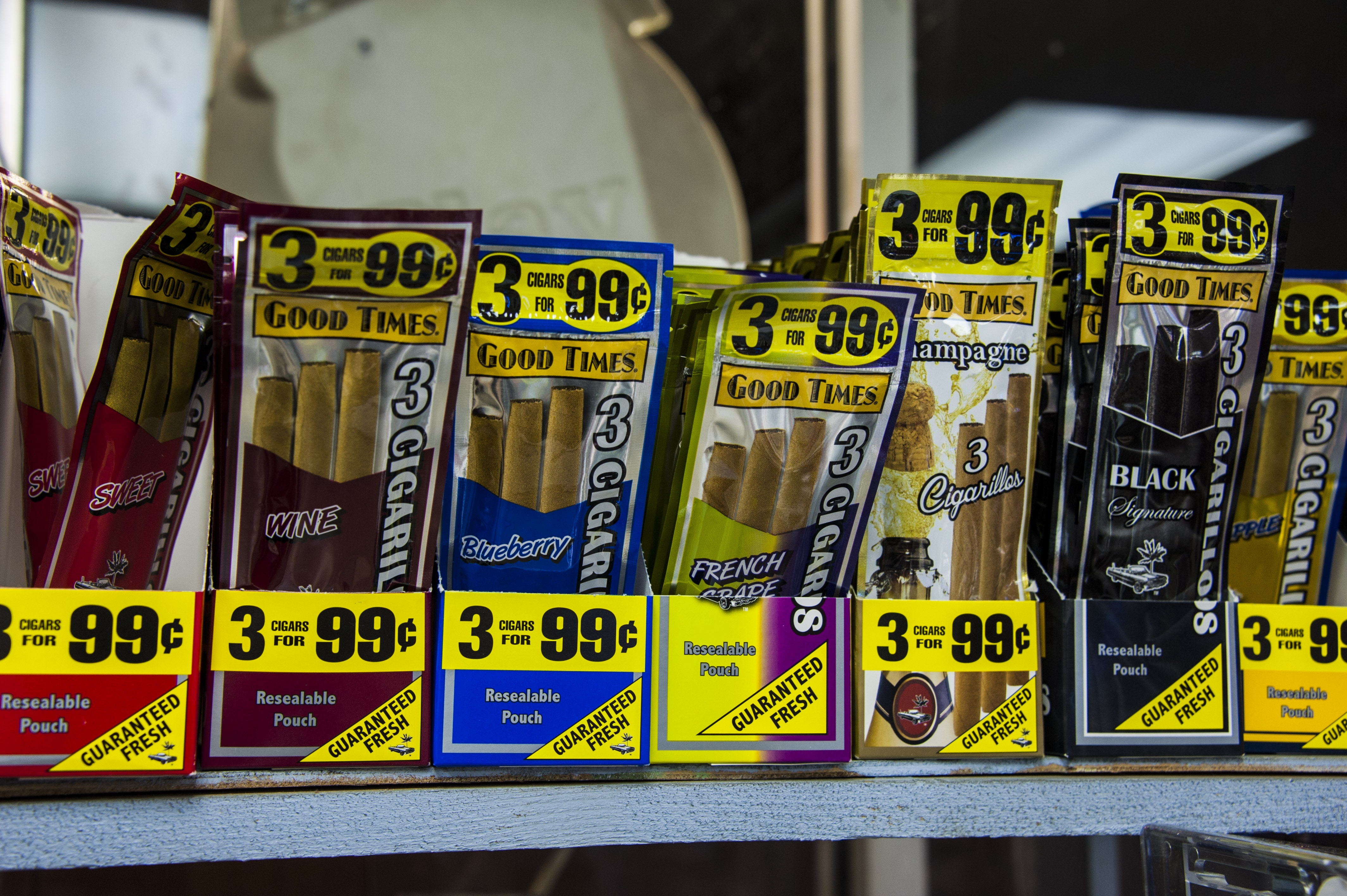 California: San Francisco became the first city in the U.S. to prohibit the sale of all flavored tobacco products including menthol cigarettes, without exception. Read more here. Oakland passed a similar ordinance, and many other CA cities including El Cerrito, Hayward, Los Gatos, Manhattan Beach, Contra Costa County, Palo Alto, and San Leandro passed some form of restriction on the sale of flavored tobacco products, many including menthol.
California: San Francisco became the first city in the U.S. to prohibit the sale of all flavored tobacco products including menthol cigarettes, without exception. Read more here. Oakland passed a similar ordinance, and many other CA cities including El Cerrito, Hayward, Los Gatos, Manhattan Beach, Contra Costa County, Palo Alto, and San Leandro passed some form of restriction on the sale of flavored tobacco products, many including menthol. - Minnesota: Minneapolis updated their flavored tobacco restriction to include menthol cigarettes, restricting their sale to adult-only tobacco and liquor stores. Their twin city, St. Paul, followed suit. The Minnesota cities of St. Louis Park and Robbinsdale both also passed restrictions on the sale of flavored tobacco products in 2017.
- Rhode Island: Central Falls and Middletown prohibited the sale of flavored tobacco products, excluding menthol, except in smoking bars.
- Massachusetts: Over 100 municipalities in the state of Massachusetts now have some restriction on the sale of flavored tobacco products.
- Tobacco 21 – New Jersey, Oregon, and Maine all raised the minimum legal sales age to 21 at the state level, bringing the total number of “Tobacco 21” states to five. The Maine legislature voted to override Governor LePage’s veto in order to do so.
- New York City – NYC updated their comprehensive POS regulations, raising the minimum price for cigarettes to $13, setting minimum prices for all other tobacco products, setting a city-wide cap on retailer licenses at half of the current number in each district, and adding a licensure requirement for e-cigarettes.
2018
- Tobacco 21 – Massachusetts raised the age to 21 in July 2018, effective December 31, 2018. Between Needham, MA’s law in 2005 and the statewide law in 2018, over 230 Massachusetts towns and counties had also raised the age, including Boston
- Tobacco-free pharmacies
- In July 2018, Massachusetts became the first state to prohibit the sale of tobacco products at pharmacies, hospitals, or other healthcare institutions.
- Two additional NY counties also passed tobacco-free pharmacy laws: Albany County in May 2018 and Erie County in December 2018
2019
- Tobacco 21
- 13 more states raised the legal age for tobacco to 21, bringing the total to 19.
- On December 20, 2019, federal legislation was signed into law raising the minimum legal sales age from 18 to 21 nationwide.
- Tobacco-free pharmacies – Suffolk County, NY prohibited the sale of all tobacco products in pharmacies in April 2019.
- Cigarette Graphic Health Warning Labels – On August 15th, the FDA released a new proposed rule requiring graphic health warnings on cigarette packages with a series of thirteen proposed images, each paired with warning text that focus on the lesser-known health risks of smoking.
- Heated Tobacco Product iQOS was authorized for sale and introduced into the US, starting with markets in the Atlanta, GA and Richmond, VA areas.
- Federal action on flavored tobacco products:
- March 13, 2019: The FDA issued a draft compliance policy for flavored e-cigarettes and cigars
- September 11, 2019: the White House announced that the federal government will remove flavored e-cigarettes from the market
- Massachusetts prohibits the sale of all flavored tobacco products, including menthol cigarettes and flavored e-cigarettes
- EVALI: The United States saw an outbreak of e-cigarette, or vaping, product-use associated lung injury (EVALI) resulting in 2,561 hospitalizations across all 50 states, D.C., Puerto Rico, and the U.S. Virgin Islands and 55 deaths (as of December 27, 2019).
2020
- Tobacco-free pharmacies:
- State action: In April 2020, New York became the second state to prohibit the sale of tobacco products at pharmacies
- Federal action on flavored tobacco products: On January 2, 2020, the FDA issued final guidance prohibiting the sale of flavored cartridge-based (closed system) e-cigarette products other than menthol or tobacco flavor.
- State action on flavored tobacco products:
- February 2019: Maryland bans the sale of flavored disposable e-cigarettes, which are otherwise exempt from the federal regulations.
- Rhode Island, New Jersey, and New York ban the sale of flavored e-cigarettes
- Local action on flavored tobacco products:
- Oakland, CA passed a measure in May 2020 that updated their previous ordinance, making it comprehensive instead of restricting the sale of all flavored tobacco products, including menthol, to adult-only tobacco specialty stores.
- Cigarette Graphic Health Warning Labels: On March 17, 2020, the FDA released a final rule requiring graphic health warning labels (a rotating set of 11 images and text) on all cigarette packages and in cigarette advertisements. When the requirement goes into effect, these will cover the top 50% of the front and back of cigarette packages, as well as 20% of the top of cigarette advertisements.
- Pricing Policies:
- New York prohibits the redemption of coupons and manufacturer discounts statewide
- New Jersey’s policy prohibiting the redemption of coupons and price discounts went into effect in March 2020
- Oakland, CA sets a minimum price of $8 per pack of cigarettes, $8 per single cigar, and $8 per pack of little cigars (which, like cigarettes, are required to be sold in packs of at least 20).
2021
- FDA action on menthol cigarettes and flavored cigars: On April 29, 2021, he FDA announced their intention to issue proposed product standards to ban menthol cigarettes and flavored cigars. Learn more about the decades of work leading up to this announcement.
- Local and state flavor bans:
- In 2021, state and local governments continued the push to ban the sale of all flavored tobacco products, with at least 335 localities across 13 states now restricting the sale of flavored tobacco products, including an increasing number that include menthol cigarettes and do not include exemptions. Bangor became the first city in Maine to pass a ban on the sale of flavored tobacco, and Washington County became the first place in Oregon to do so.
- Endgame policies:
- January 1, 2021: policies prohibiting the sale of all tobacco products in went into effect in Beverly Hills and Manhattan Beach, CA
- April 26, 2021: Bloomington, MN passed a policy to phase out tobacco sales by ceasing to offer any new tobacco licenses, and sunsetting any existing licenses when those businesses close.
- July 2021: The Massachusetts Attorney General approved the nation’s first tobacco-free generation policy, with was originally passed in November 2020 in Brookline, MA, prohibiting the sale of tobacco products to anyone born after January 1, 2000.
- Pricing Policies:
- Rhode Island prohibits the distribution and redemption of discounted tobacco products statewide.
- St. Paul, MN set a $10 per pack minimum price for cigarettes as well as a $10 minimum price per tin of moist snuff or snus, and banned the redemption of coupons on other discounts on tobacco products. The city already had a minimum price for cigars of $2.60 per cigar.
- Licensing:
- Oregon passed a statewide licensing allow for license suspension or revocation with frequent violations, includes a civil penalty structure, allows for stronger local level sales restrictions and regulations, and is required to fully fund the administration and enforcement of the licensing program.
- FDA Premarket Review: the FDA authorized the first e-cigarettes and oral nicotine products through the agency’s premarket review process, while denying marketing authorization to
2022
- On March 17, the Federal Trade Commission released the agency’s first report on e-cigarette companies’ marketing expenditures.
- On April 14, FDA gained the authority to regulate synthetic or non-tobacco nicotine.
- On April 28, the FDA released two proposed rules prohibiting menthol as a characterizing flavor in cigarettes and all characterizing flavors in cigars, and the rules were open for comment through August 2nd. Once a finalized rule is announced, the FDA proposed a one-year implementation timeline. However, this may be further delayed by tobacco industry litigation.
- On June 21st, the FDA announced plans for a proposed rule that would set a maximum amount of nicotine in cigarettes, reducing it to a minimally or non-addictive level. The proposed rule will be issued by May 2023, after which there will be an open comment period like the one going on now for the proposed rules on menthol cigarettes and flavored cigars.


